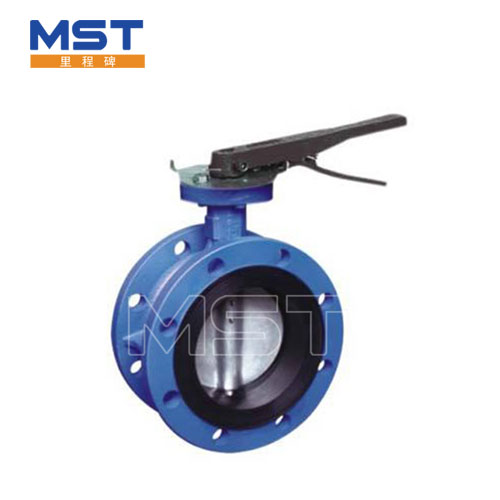Here are some key features and characteristics of cast iron butterfly valves
2023-12-21
A cast iron butterfly valve is a type of quarter-turn valve that is used to control the flow of fluids in pipelines. It is named for the metal disc or "butterfly" that is mounted on a rod. When the valve is in the closed position, the disc blocks the flow of the fluid, and when it is in the open position, the disc is parallel to the flow, allowing the fluid to pass through.
Here are some key features and characteristics of cast iron butterfly valves:
1. Material:
- Cast iron butterfly valves are made from cast iron, a strong and durable material that is well-suited for various industrial applications.
2. Disc Design:
- The disc of the butterfly valve is typically flat and circular, resembling a butterfly. It is mounted on a spindle or shaft in the center of the valve body.
3. Quarter-Turn Operation:
- Butterfly valves operate on a quarter-turn principle. This means that the valve can be quickly opened or closed with a 90-degree rotation of the valve handle or actuator.
4. Wafer or Lug Style:
- Cast iron butterfly valves are available in different styles, including wafer and lug designs. Wafer-style valves are installed between flanges using bolts, while lug-style valves have threaded inserts or lugs for bolting the valve to the pipeline.
5. Sealing Mechanism:
- The sealing mechanism of a butterfly valve is achieved by pressing the disc against the valve seat. This design provides a tight shut-off when the valve is in the closed position.
6. Resilient Seat Options:
- Many cast iron butterfly valves feature resilient seats made of materials such as EPDM or NBR (Nitrile). Resilient seats provide a tight seal and are suitable for a variety of applications.
7. Manual or Actuated Operation:
- Cast iron butterfly valves can be operated manually using a handle or lever. Additionally, they can be equipped with actuators (electric, pneumatic, or hydraulic) for remote and automated operation.
8. Size Range:
- These valves are available in a wide range of sizes, making them suitable for various pipe diameters and flow rates.
9. Corrosion Resistance:
- While cast iron provides strength, it is important to note that cast iron butterfly valves may be susceptible to corrosion. To address this, some valves may have coatings or linings for enhanced corrosion resistance.
10. Applications:
- Cast iron butterfly valves find applications in industries such as water treatment, wastewater, HVAC (heating, ventilation, and air conditioning), chemical processing, and general industrial processes.
11. Pressure Ratings:
- The pressure rating of a cast iron butterfly valve indicates the maximum pressure it can withstand. It is important to select a valve with a pressure rating that matches the requirements of the specific application.
12. Temperature Range:
- The temperature range of the valve should be considered to ensure that it is suitable for the intended fluid and environmental conditions.
When selecting a cast iron butterfly valve, it's crucial to consider factors such as the application, pressure requirements, temperature conditions, and compatibility with the fluid being handled. Regular maintenance and proper installation are also essential for ensuring the long-term performance of these valves.



